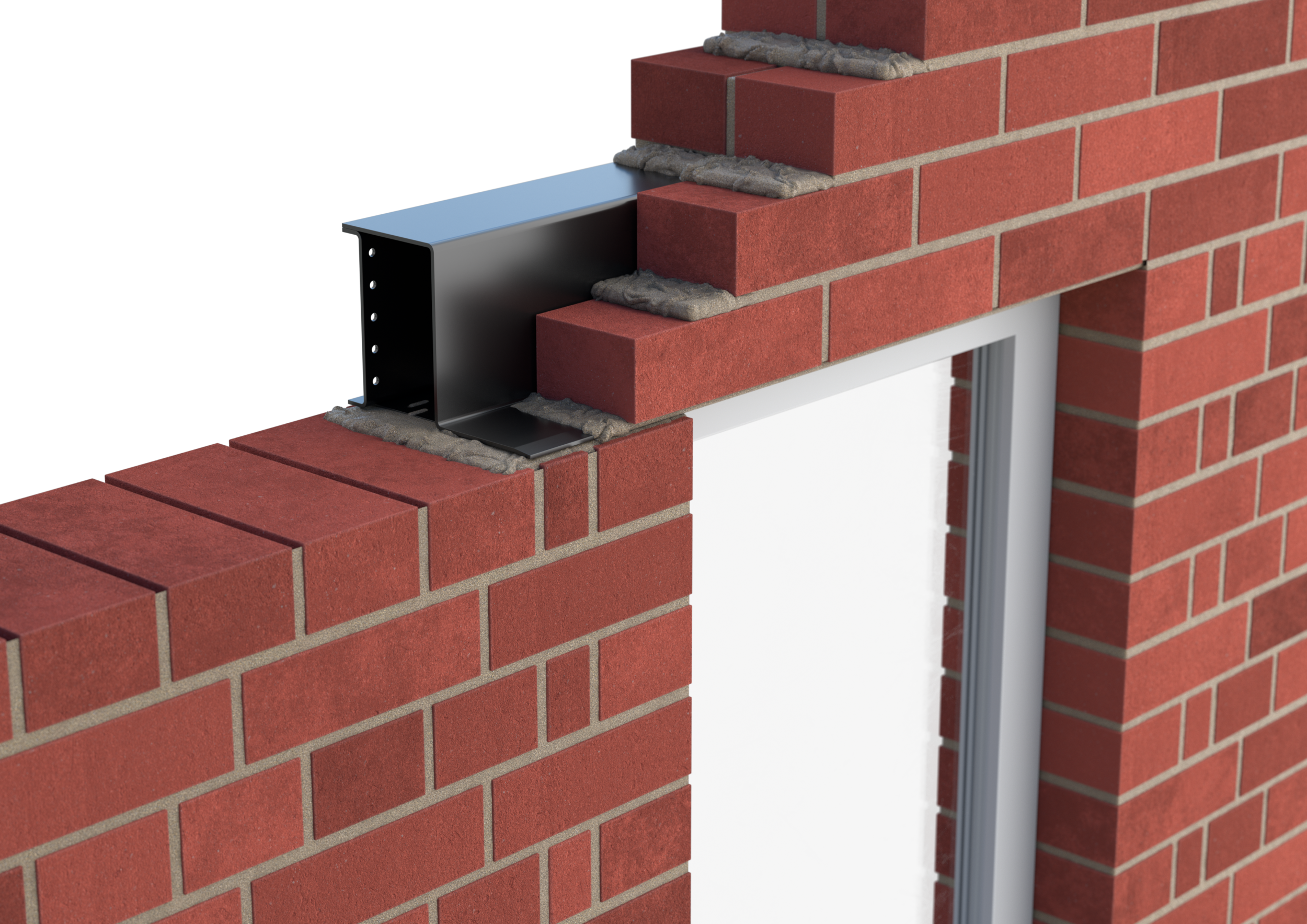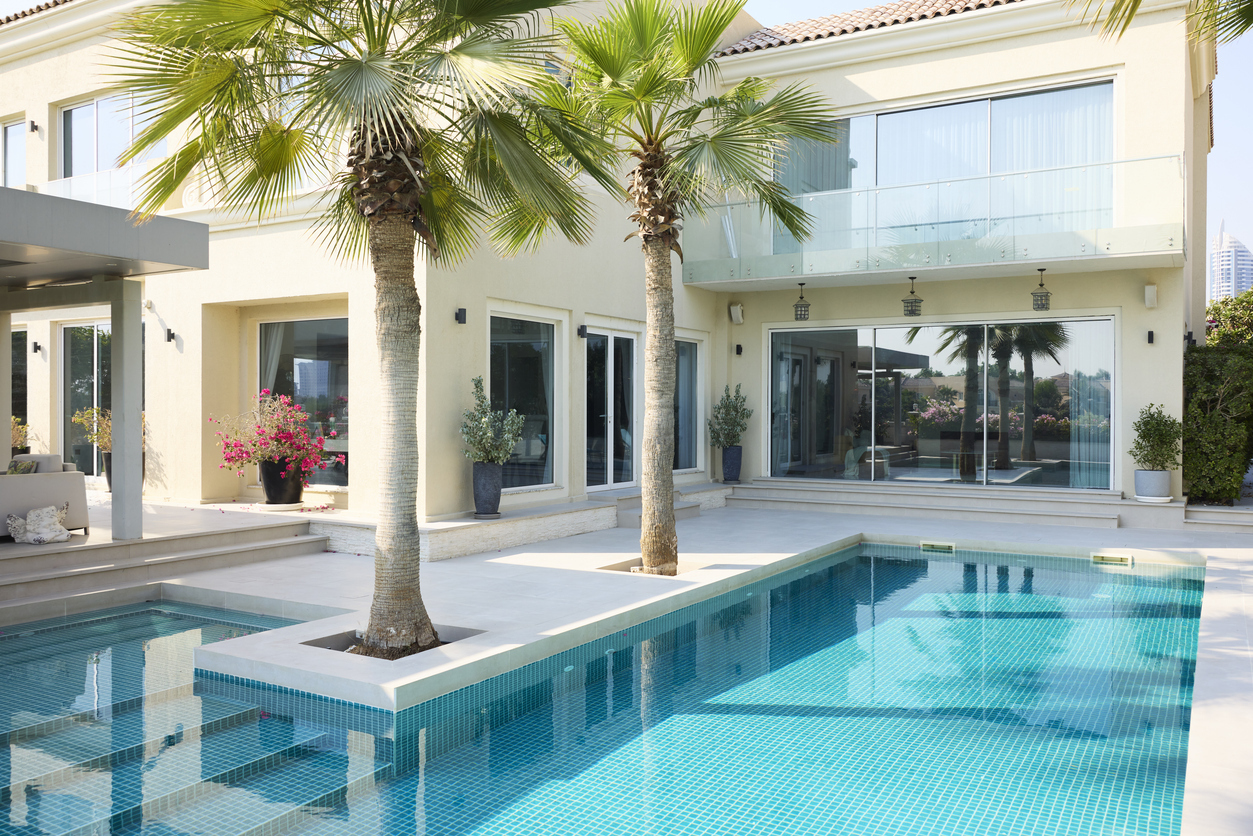Steel is the ideal lintel material for external solid walls, offering box profiles and inverted T profiles to suit different types of build-up.
External solid wall constructions vary in their thickness and make-up, featuring brick, concrete block or a combination of the two. Steel is the ideal lintel material for solid walls, being strong enough and versatile enough to create products that sit unobtrusively within the wall build-up while supporting the entire thickness of the construction over structural openings.
What is a solid wall?
A typical external solid wall is around 200mm to 215mm thick, being a double thickness of ‘standard’ brick and/or concrete block masonry. Unlike a masonry cavity wall, a solid wall has no meaningful air space between the two masonry ‘skins’.
The make-up of the solid wall depends on the desired external finish. A solid wall can be constructed entirely from brick, stone, or with a concrete inner and a brick outer face. Alternatively, where a rendered or cladding finish is desired, the whole wall can be constructed using concrete blocks.
In some cases, the term ‘solid wall’ is also used for load-bearing masonry walls of 75mm to 100mm thick. Catnic distinguishes between external solid walls and internal walls, with a separate range of internal wall lintels available.
What type of lintels are available for solid walls?
As well as the wall construction, lintel specification is determined by the size of the opening the lintel has to span and the load imposed by the structure above. Catnic offers two types of steel lintel for external solid walls, and both ranges include options for standard duty and heavy duty loading conditions.
Box lintels feature a hollow rectangular profile, which is installed as part of the inner ‘skin’ of masonry. A projecting toe sits across the outer ‘skin’, supporting that part of the wall build-up. If thermal insulation is to be part of the wall construction, then a box lintel can feature integral insulation to help reduce the impact of the steel on the overall heat loss through the wall.
Inverted T lintels are exactly what they sound like, comprising a base plate that spans the complete wall thickness and supports the masonry. A central plate, perpendicular to the centre of the lintel’s base, gives the lintel rigidity and sits in the centre of the wall construction between the two masonry skins. Integral insulation is not an option.
Use the Catnic lintel product selector to start the specification process and help find the right lintels for your project. Search by wall type and loading condition, among other options, to see relevant search results and explore the performance characteristics of each lintel.
For detailed technical support or to discuss non-standard steel lintel solutions for other solid wall build-ups, contact us to discuss your requirements.
More
-
![Coastal property in middle east housing complex, with external render finish]()
- Plaster Bead & Mesh
- Guide
A Specifier’s Guide to Choosing the Right Plasterers’ Beads for Hot, Humid and Coastal Environments
-
![]()
- Plaster Bead & Mesh
- Guide
How to Fix an Angle Bead to Plasterboard


